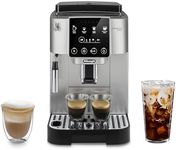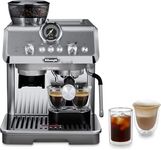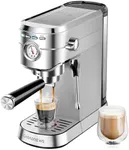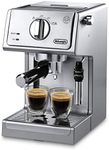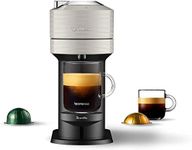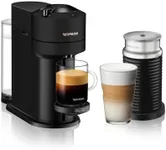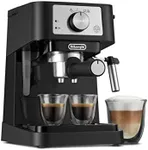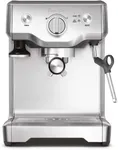Buying Guide for the Best Espresso Machine For Beginner
Choosing your first espresso machine can be exciting but also a bit overwhelming, given the variety of options available. The key is to focus on what will make your coffee experience enjoyable and manageable as a beginner. Think about how much effort you want to put into making coffee, how much control you want over the process, and how much space you have in your kitchen. Understanding the main features will help you find a machine that matches your needs and helps you learn and grow as a home barista.Type of MachineEspresso machines come in several types, such as manual, semi-automatic, automatic, and super-automatic. This refers to how much of the brewing process is handled by the machine versus you. Manual machines require you to do everything, which can be challenging for beginners. Semi-automatic machines let you control the brewing time but automate water pressure, offering a good balance of control and ease. Automatic machines handle timing for you, making things simpler, while super-automatic machines do almost everything, including grinding and tamping. For beginners, semi-automatic or automatic machines are usually the best starting point, as they offer a mix of learning and convenience.
Boiler TypeThe boiler heats the water for brewing and steaming. Machines can have a single boiler, dual boiler, or heat exchanger. Single boilers are more affordable and compact but require waiting between brewing and steaming. Dual boilers allow you to brew and steam at the same time, which is faster but makes the machine larger and more complex. Heat exchangers are a middle ground, letting you do both tasks with one boiler but using a special design. For beginners, a single boiler is often sufficient unless you plan to make lots of milk drinks quickly.
Ease of UseEase of use covers how simple it is to operate the machine, clean it, and maintain it. Some machines have intuitive controls, clear instructions, and easy-to-remove parts for cleaning. Others may require more steps or technical knowledge. If you’re new to espresso, look for machines with straightforward buttons or dials, clear indicators, and accessible water tanks and drip trays. This will help you focus on learning the basics without getting frustrated.
Steam WandThe steam wand is used to froth milk for drinks like lattes and cappuccinos. Some machines have manual steam wands, which give you more control but require practice, while others have automatic frothers that make the process easier. If you’re interested in making milk-based drinks but are new to frothing, an automatic or assisted steam wand can help you get started, while a manual wand is better if you want to learn and improve your technique over time.
Size and DesignEspresso machines come in various sizes and styles, from compact models that fit in small kitchens to larger, more professional-looking machines. Consider how much counter space you have and whether you want the machine to be a focal point or blend in. Also, think about the water tank and bean hopper sizes, as larger capacities mean less frequent refilling but take up more space. Choose a size and design that fits your kitchen and your daily routine.
PressureEspresso machines use pressure to force hot water through coffee grounds, creating the rich flavor and crema. Most machines are rated by the maximum pressure they can generate, usually measured in bars. Standard espresso is brewed at around 9 bars of pressure, but many machines advertise higher numbers. For beginners, it’s more important that the machine can consistently reach and maintain the right pressure, rather than just having a high maximum. Look for machines that mention stable or consistent pressure for reliable results.
